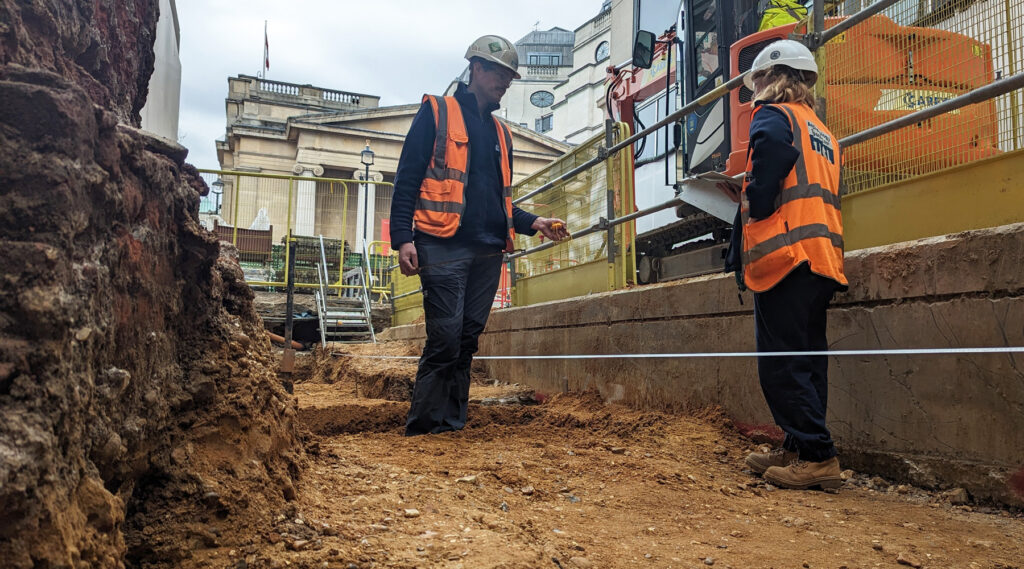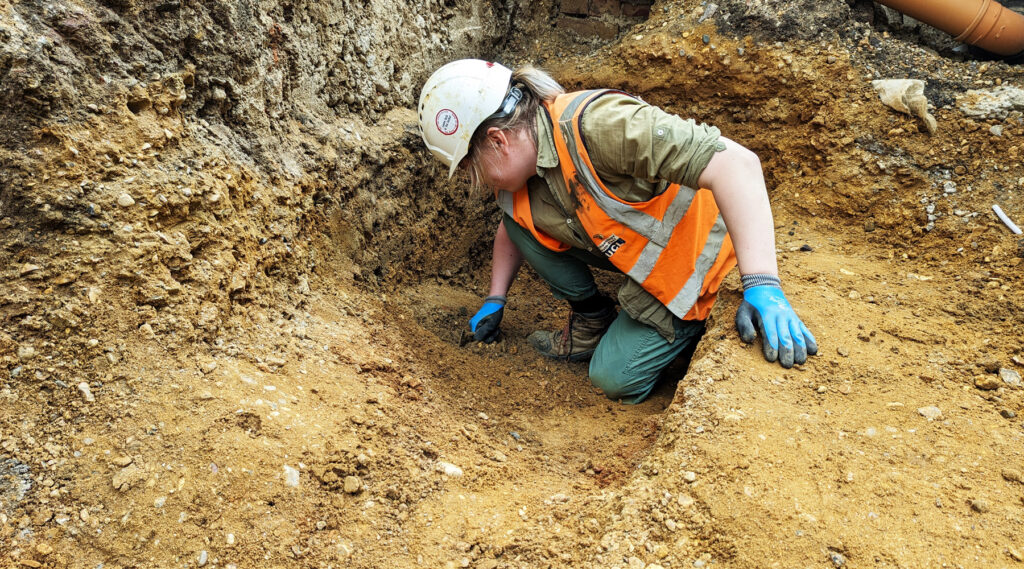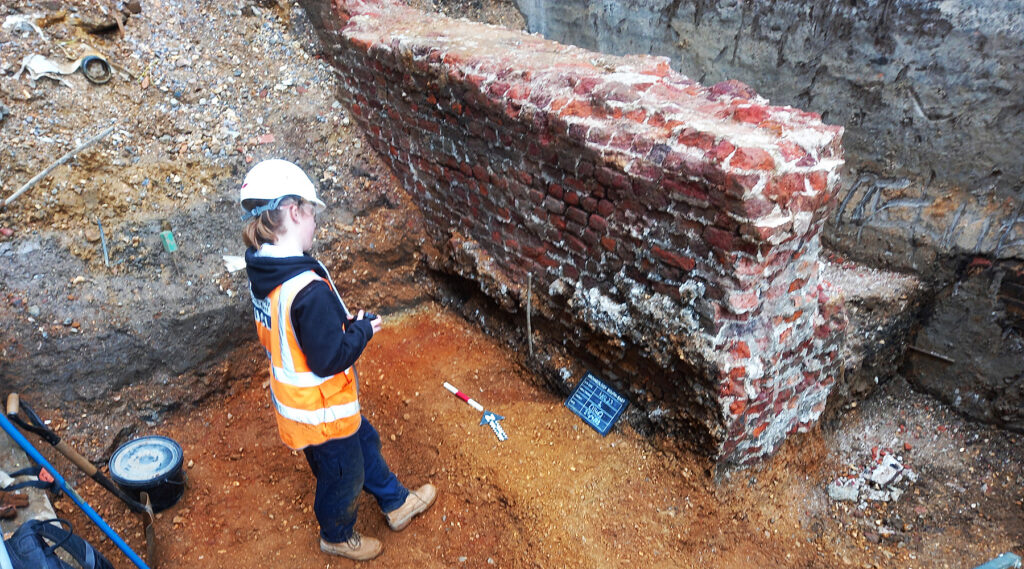Engineers digging a tunnel underneath the National Gallery have discovered objects from Saxon times, showing that the urban centre of Saxon London extended further west than previously thought.
The discoveries that have been found appear to be from Lundenwic, the name given to the 7th-century Saxon city built in the Aldwych area following the abandonment of Roman London in the 5th century. The National Gallery lies at the western end of this settlement, and athough excavations in the immediate area have found Saxon material previously, this is the first excavation to prove that the urban centre extended this far west.
The excavations are in the gap between the original National Gallery building and the later Sainsbury Wing that was added in 1991, and are part of an upgrade of the gallery to make it easier to get between the two buildings by linking them with an underground tunnel. Before the Sainsbury’s Wing was built, this part of the land on the corner of Trafalgar Square was used for various purposes, from King Richard II’s Royal Mews for hunting hawks to stables and even a possible row of houses.
At the moment, the gap between the two wings of the gallery is closed so that the new tunnel can be dug between them, and that allows Archaeologists from Archaeology South-East, part of the UCL Institute of Archaeology, to study the ground as it was cleared looking for historical finds.
The archaeologists unearthed a hearth, postholes, stakeholes, pits, ditches and levelling deposits, which initial interpretations suggest could show the reworking of fence lines and evolving property boundaries in this western suburb of Lundenwic. The hearth was dated to between 659 and 774 AD for the earliest occupation.
Above this sequence of Saxon layers were post-medieval walls, and the earliest wall they found was probably built in the 17th or 18th centuries. Archaeologists observed lots of phases of rebuilding of these walls with different building fabrics up until the 19th century.
Stephen White, who led the Jubilee Walk excavations for Archaeology South-East, said: “Excavating at the National Gallery was an incredible opportunity to investigate interesting archaeology and to be involved with some truly outstanding outreach. The evidence we uncovered suggests the urban centre of Lundenwic extends further west than originally thought. This was made all the more exciting by having the chance to share that information, and how it relates to archaeology across London, with young people from this city.”
The excavations were undertaken as part of the National Gallery’s NG200: Welcome, a redevelopment project forming part of the Gallery’s Bicentenary celebrations. The new tunnel link between the two buildings will open when Phase 2 of the NG200 project is completed, and London gains another tunnel to add to its subterranean maze.










Leave a Reply